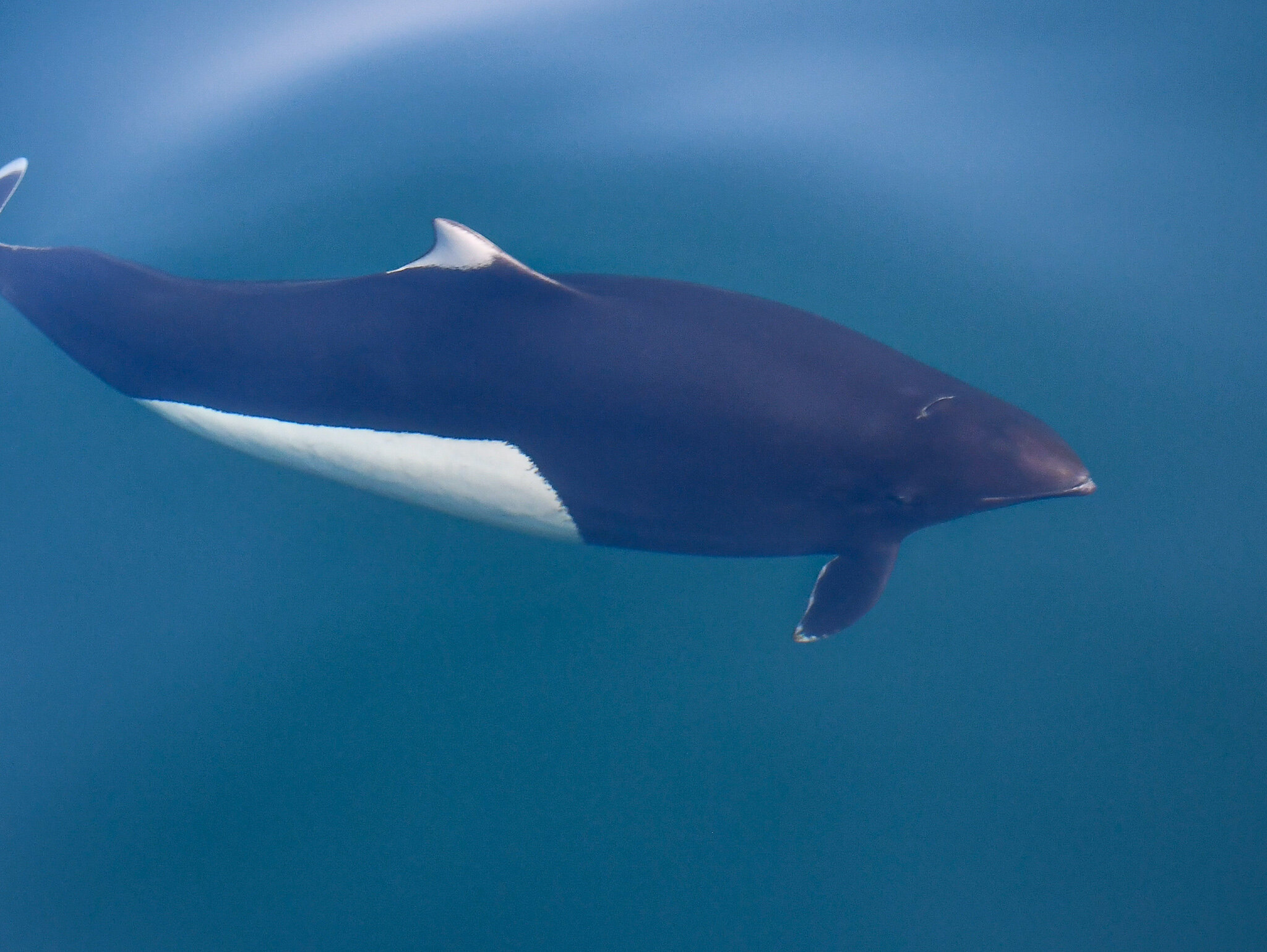
Cetaceans
The Salish Sea is home to a wide variety of cetaceans, several of which can be seen throughout the entire year. Scroll down to learn more about some of the cetaceans we see most frequently on our whale and wildlife tours.
Killer Whales (Orcas)
Length: 17-30 ft. (5.1-9.5m)
Weight: 7,000-22,000 lbs. (3,100-10,000 kg)
Lifespan: Up to 80-90+ years for females, 30-50+ years for males
Diet: Varied based on subspecies/ecotype
Presence: Year-round
The Pacific Northwest is one of the best places on earth to see killer whales, also known as orcas. While many whale species migrate from cold water in the summer to warm water in the winter, killer whales don’t make such migrations and can be seen in the Salish Sea throughout the year. Two subspecies of killer whale are seen here regularly - Bigg’s, or mammal-eating killer whales fish-eating “resident” killer whales. As salmon populations decline, sightings the endangered Southern Resident killer whale population have become less frequent and more unpredictable. In contrast, with a stable supply of seals, sea lions, and porpoises for Bigg’s killer whales to feed on, their population is booming, with more than 120 calves born in the last decade. PWWA tours do not focus on endangered Southern Residents, and you should not expect to see them on a Salish Sea whale watching tour. You can, however, learn more about Southern Residents here.
Humpback Whales
Length: 40-50 ft. (12.2-15.2m)
Weight: 50,000-80,000 lbs. (22,680-36,280kg)
Lifespan: 70+ years
Diet: Krill, small bait fish
Presence: Sightings possible year-round, peak April through November
Extirpated from the Salish Sea by commercial whaling in the early 1900’s, humpback whales have experienced a tremendous recovery in recent years. There are now more than 500 humpback whales in the Salish Sea catalog, identified by the unique markings on their tails. While they are one of the largest creatures we find in the Salish Sea at nearly 50 feet in length, they feed on some of the smallest. Each humpback will feast on about 2,000 pounds of baitfish or krill each day. Humpback whales are a migratory species, spending winter months in warmer places like Hawai'i, Mexico, or Central America.
Gray Whales
Length: 40-46 ft. (12-14.1m)
Weight: 60,000-80,000 lbs. (27,215-36,280kg)
Lifespan: 70+ years
Diet: Ghost shrimp, benthic amphipods
Presence: Sightings possible year-round, peak February through May
Gray whales are another large migratory species, traveling between the Arctic in the summer and the Baja Peninsula of Mexico in the winter. During this long journey, gray whales eat very little and will lose up to a third of their body weight. The Salish Sea serves as a valuable pit stop for gray whales as they make their journey north. Spring and early summer are the best months to catch a glimpse of these gentle giants, especially in Puget Sound where they feast on ghost shrimp. Many of the gray whales seen here have been returning year after year since the 1990’s!
Minke whales
Length: 26-33 ft. (7.92-10m)
Weight: Up to 20,000 lbs. (9,070kg)
Lifespan: 50-60+ years
Diet: Krill, small bait fish
Presence: Sightings possible year-round, peak May through September
Minke whales (pronounced min-key) are as mysterious as they are endearing. It was not until quite recently that researchers began to dive into the lives of these small baleen whales. Drawn to the region by an abundance of small bait fish in the spring and summer, minke whales are often found lunging up toward the surface through tight schools of fish called baitballs. While not known to be as social as other types of whales, when the food is plentiful, it’s not unusual to see several whales feeding together while flocks of seabirds join in on the action.
Harbor porpoise
Length: Up to 6 ft. (1.9m)
Weight: Up to 200 lbs. (90kg)
Lifespan: Up to 25 years
Diet: Fish
Presence: Year-round
Harbor porpoise are the hummingbirds of the Salish Sea - they need to eat almost constantly to keep up with their quick metabolisms. A single harbor porpoise can eat hundreds of small bait fish, like sardines or anchovies, per hour. While their small size and shy nature can make them difficult to spot, harbor porpoise are one of the most plentiful marine mammals in the region. On a calm day, you can easily see their triangular dorsal fins break the surface and even hear a “puff” as they exhale, giving rise to their nickname, the “puffing pig”.
Dall’s porpoise
Length: Up to 7.5 ft. (2.3m)
Weight: Up to 270 lbs. (123kg)
Lifespan: Up to 20 years
Diet: Fish and squid
Presence: Year-round
Dall’s porpoise are among the fastest marine mammals on earth. These speed demons have been clocked at speeds of up to 35 miles per hour! Unlike their shy cousins, Dall’s porpoises will occasionally approach vessels to play in the wake. With their striking black and white coloration, Dall’s porpoise are occasionally mistaken for young killer whales, but they are a in fact a fascinating species of their own. Porpoises differ from dolphins in a few ways, most notably by having a shorter and stockier physique and flat, spade-shaped teeth compared to a dolphin’s more pointed, cone-shaped teeth.
Pacific white-sided dolphin
Length: Up to 8 ft. (2.5m)
Weight: Up to 300 lbs. (136kg)
Lifespan: Up to 40 years
Diet: Fish and squid
Presence: Sightings can be year-round, more likely in the northern Salish Sea
Pacific white-sided dolphins are commonly referred to as “Lags” after their scientific name, Lagenorhynchus obliquidens. While sightings of these beautiful dolphins are rare throughout much of the Salish Sea, when we are lucky enough to spot these acrobatic cetaceans, it’s always a treat.








